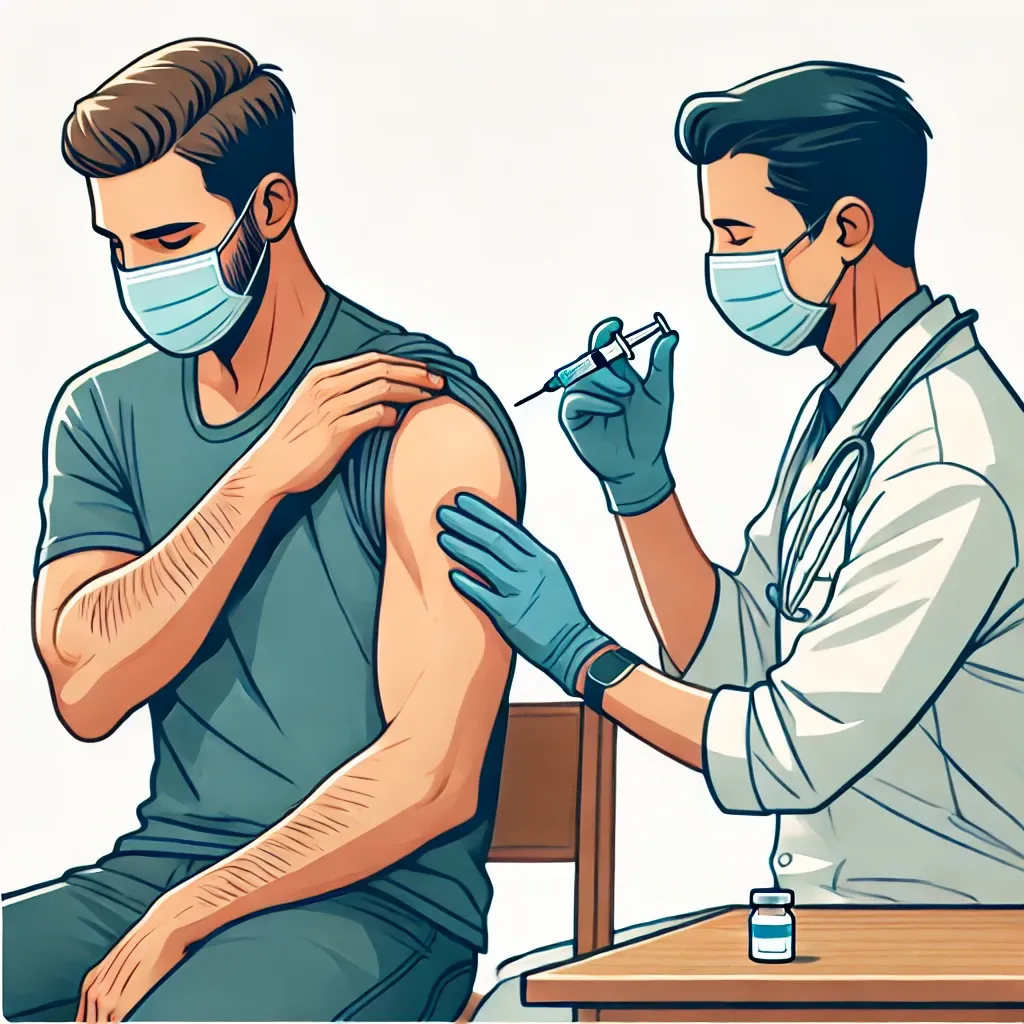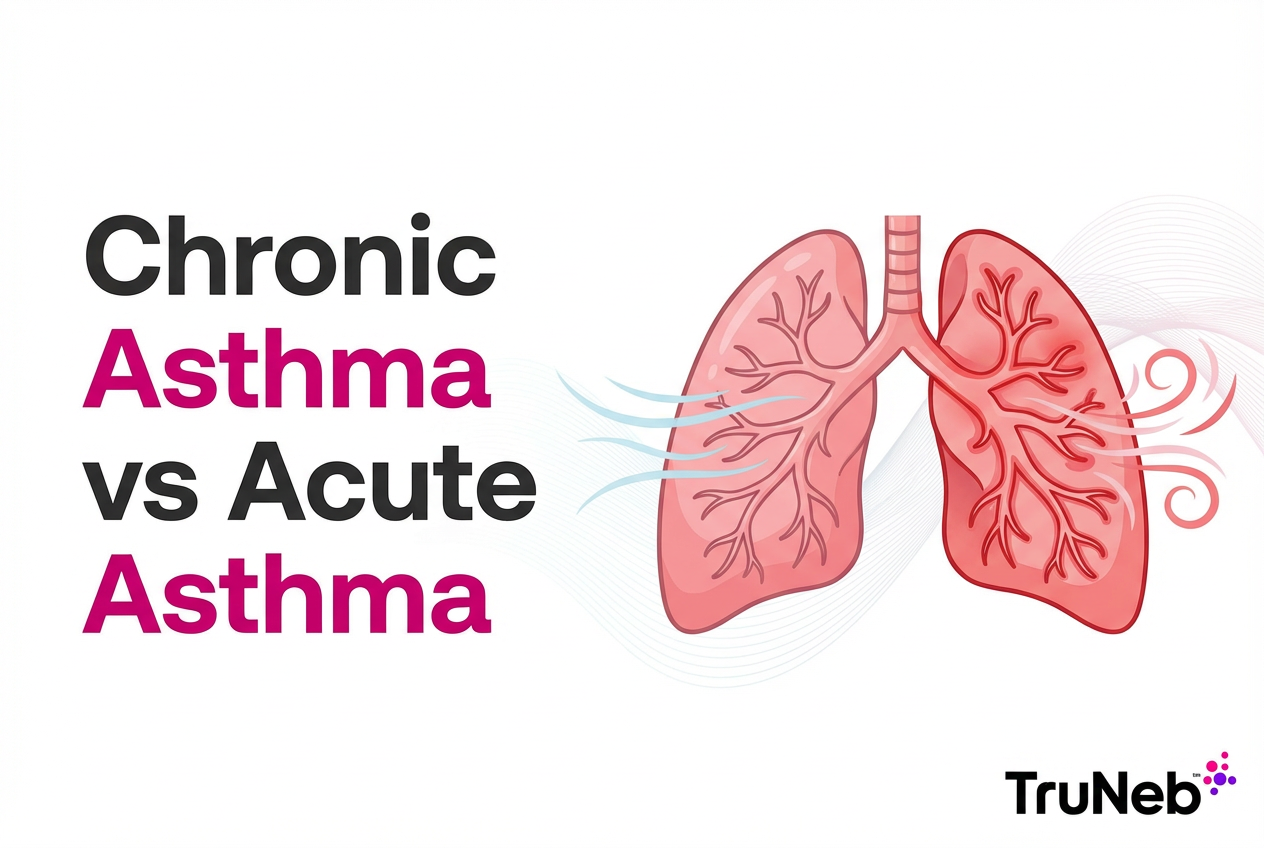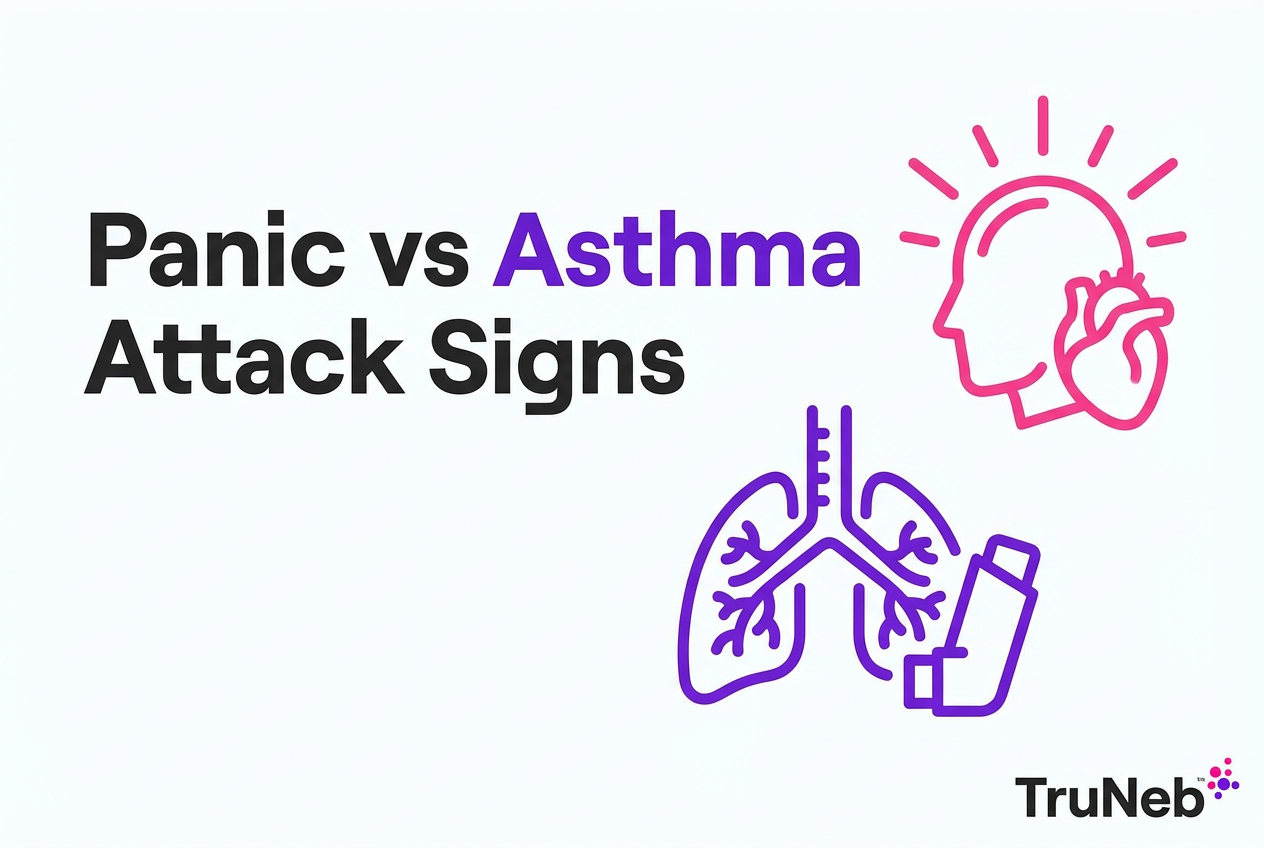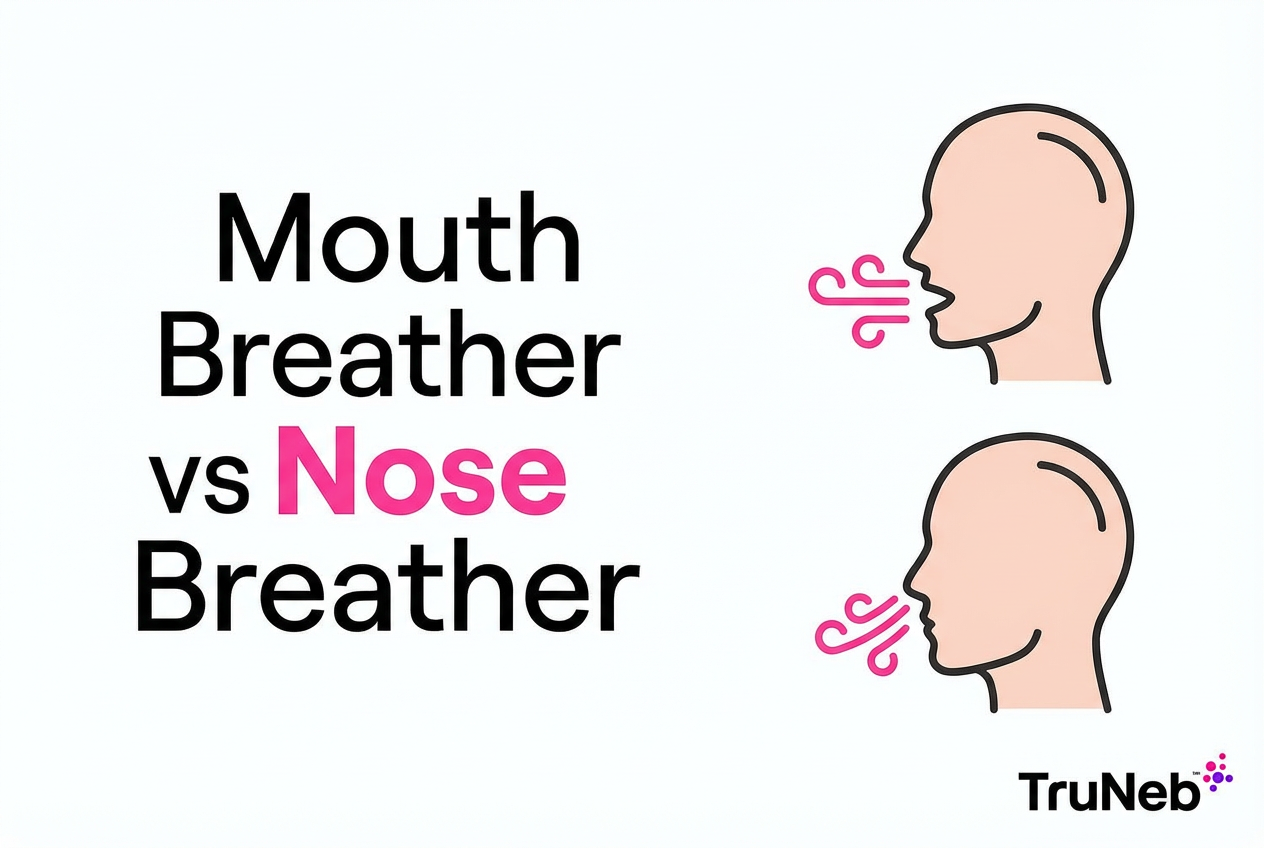On this page

When you’re dealing with respiratory symptoms like coughing and shortness of breath, it can be tricky to figure out what’s going on—especially when bronchitis and COVID-19 share so many similarities. Both illnesses affect the respiratory system and can leave you feeling worn out, but they come from different causes and may require different treatments. So how can you tell the difference?
Understanding the distinctions between bronchitis vs. COVID-19 is important for getting the right diagnosis and care. Whether it’s managing a lingering cough or preventing symptoms from escalating, knowing what you're dealing with can make all the difference.
What is Bronchitis?
Acute vs. Chronic Bronchitis
Bronchitis is a respiratory condition that occurs when the lining of your bronchial tubes (the tubes that carry air to your lungs) becomes inflamed. There are two types: acute and chronic. Understanding the difference between them can help you know what to expect if you're dealing with a persistent cough or other symptoms.
Acute Bronchitis
Acute bronchitis, sometimes referred to as a “chest cold,” is a short-term inflammation of the bronchial tubes. It’s usually caused by a viral infection—most commonly the same viruses responsible for colds and the flu. Acute bronchitis tends to develop quickly, starting with a dry, hacking cough that may eventually produce mucus. This type of bronchitis typically clears up on its own within a few weeks, but during that time, it can make breathing uncomfortable and leave you feeling fatigued.
Chronic Bronchitis
Chronic bronchitis, on the other hand, is a long-term condition often triggered by smoking, air pollution, or exposure to harmful chemicals. It falls under the umbrella of Chronic Obstructive Pulmonary Disease (COPD) and can cause persistent, recurring bouts of coughing, wheezing, and shortness of breath. Unlike acute bronchitis, chronic bronchitis doesn’t just go away after a few weeks—it’s a long-lasting condition that requires ongoing management, often with the help of medications, inhalers, or nebulizers.
Symptoms of Bronchitis
Dry vs. Wet Cough
One of the telltale signs of bronchitis is a cough, but not all coughs are the same. In the early stages of acute bronchitis, you’ll typically have a dry, irritating cough. As the condition progresses, this cough can become wet, meaning you start to produce mucus as your body tries to clear out the inflammation from your airways. Chronic bronchitis, on the other hand, often comes with a wet cough right from the start, with thick mucus being a persistent feature.
Other symptoms of bronchitis include:
- Wheezing: A high-pitched, whistling sound when you breathe, often because of narrowed airways.
- Chest discomfort: You might feel tightness or soreness in your chest, especially after coughing fits.
- Shortness of breath: Bronchitis can make it harder to catch your breath, especially during physical activity.
- Low-grade fever: In some cases, bronchitis can cause a mild fever, though it’s not as common as with viral infections like the flu.
By recognizing these symptoms, you can better understand whether you might be dealing with bronchitis and how to approach treatment, including the use of nebulizers to help ease breathing issues.
What is COVID-19?
Overview of COVID-19
COVID-19 is a viral illness caused by the SARS-CoV-2 virus, a novel coronavirus that was responsible for the pandemic starting in 2020. This virus primarily affects the respiratory system, but its impact can go far beyond the lungs, causing widespread symptoms throughout the body. While many people experience mild or moderate illness, COVID-19 can lead to severe complications, particularly in older adults or those with pre-existing conditions.
COVID-19 spreads easily through respiratory droplets when an infected person coughs, sneezes, or even talks. Its contagious nature and wide range of symptoms have made it challenging to diagnose without testing, especially since many of its symptoms overlap with other respiratory illnesses like bronchitis and the flu.
Symptoms of COVID-19
COVID-19 symptoms can vary widely from person to person, but some of the most common symptoms include:
- Dry cough: One of the hallmark symptoms of COVID-19, this cough is often persistent and doesn’t produce mucus like a typical bronchitis cough (though if pneumonia develops, this can change).
- Fever: Many COVID-19 patients experience a high fever in the early stages of the illness.
- Fatigue: Feeling excessively tired, even with minimal activity, is a frequent complaint.
- Loss of taste or smell: A sudden inability to taste or smell things is a unique symptom of COVID-19 that sets it apart from most other respiratory illnesses.
- Shortness of breath: COVID-19 can make breathing difficult, especially in more severe cases.
- Gastrointestinal issues: Nausea, vomiting, and diarrhea can also occur, though they are less common than respiratory symptoms.
One of the most concerning aspects of COVID-19 is its potential for long-term effects—referred to as long COVID. Even after the acute phase of the illness has passed, some people continue to experience symptoms like fatigue, brain fog, and shortness of breath for weeks or even months. Severe cases of COVID-19 can lead to life-threatening complications, such as pneumonia or multisystem inflammatory syndrome (MIS), where multiple organs in the body become inflamed.
Bronchitis vs. COVID-19: A Side-by-Side Comparison
Key Symptom Differences
Though bronchitis and COVID-19 share some overlapping symptoms, understanding the key differences can help you determine which illness you might be dealing with. Let's break down how they compare in terms of symptoms.
Cough Types
One of the main differences between bronchitis and COVID-19 lies in the type of cough you experience:
- COVID-19: The cough associated with COVID-19 is typically dry—meaning it doesn’t produce any mucus. This dry cough can be persistent and often gets worse over time.
- Bronchitis: Bronchitis, on the other hand, usually starts with a dry cough but quickly turns into a productive cough, meaning you’ll start coughing up mucus. This mucus can be clear, yellow, or even green, depending on the severity of the infection.
Other Symptoms
While both bronchitis and COVID-19 can make you feel unwell, there are several symptoms that can help distinguish the two:
- Loss of taste or smell: COVID-19 is notorious for causing a sudden and often severe loss of taste and smell. This symptom is rare in other respiratory illnesses like bronchitis.
- Mucus production: Bronchitis is known for producing mucus, whereas COVID-19 typically does not involve the same level of mucus production.
Both illnesses can cause shortness of breath, but the underlying reasons differ. In bronchitis, the inflammation of the bronchial tubes makes it harder for air to pass through, leading to difficulty breathing. COVID-19, however, can affect multiple organ systems, and shortness of breath may be caused by more severe damage to the lungs or other complications, such as pneumonia. COVID-19’s ability to cause inflammation and damage throughout the body makes it more dangerous and unpredictable than bronchitis, which typically affects the lungs and airways alone.
Risk Factors and Complications
COVID-19 Complications
COVID-19 is more than just a respiratory illness for many people—it has the potential to cause severe complications, especially for high-risk groups. The virus can lead to:
- Pneumonia: In more serious cases, COVID-19 can cause inflammation in the lungs that leads to pneumonia, which makes it difficult to breathe and may require hospitalization.
- Respiratory failure: COVID-19 can progress to the point where the lungs can no longer supply enough oxygen to the body, leading to respiratory failure. This condition often requires intensive care and the use of ventilators to assist with breathing.
- Long COVID: Even after the initial infection clears, some people continue to experience symptoms such as extreme fatigue, brain fog, shortness of breath, and muscle pain—sometimes for months. This phenomenon, known as long COVID, can affect anyone but is more common in severe cases.
Certain groups are at a higher risk of experiencing severe complications from COVID-19:
- Seniors: People over the age of 65 are more likely to develop severe symptoms and complications, including pneumonia and respiratory failure.
- Individuals with pre-existing conditions: Conditions like diabetes, heart disease, and lung conditions (like asthma or COPD) make it harder for the body to fight off the virus, increasing the chance of serious outcomes.
Bronchitis Complications
Acute Bronchitis
Acute bronchitis is usually a short-term illness, but if it’s left untreated, it can escalate into more serious conditions. Like COVID, it can lead to pneumonia, especially in people with weakened immune systems or pre-existing lung conditions. Pneumonia occurs when the infection spreads to the lungs' air sacs, causing them to fill with fluid and making it difficult to breathe.
Chronic Bronchitis
Chronic bronchitis is a long-term condition that significantly impacts respiratory health. Over time, repeated inflammation of the bronchial tubes can cause long-term lung damage, making it harder for the lungs to work effectively. Chronic bronchitis is also a key component of Chronic Obstructive Pulmonary Disease (COPD), which can severely restrict airflow and worsen breathing problems.
Prevention Strategies
Preventing COVID-19 vs Bronchitis
Even though COVID-19 and bronchitis can cause serious respiratory issues, there are several steps you can take to reduce your risk of getting sick and spreading illness to others.
Vaccination
Vaccination is one of the most powerful tools in preventing severe cases of COVID-19. COVID-19 vaccines have proven highly effective at reducing the risk of serious illness, hospitalization, and death. Women who get the vaccination during pregnancy may pass important antibodies to the fetus.

While there isn’t a vaccine specifically for bronchitis, getting vaccinated against the flu and keeping up with other routine vaccinations (like the DTaP vaccine, which protects against whooping cough) can reduce the chances of developing respiratory infections that could lead to bronchitis.
Hygiene Practices
Good hygiene practices are essential in preventing both COVID-19 and bronchitis. Here are some key tips to protect yourself and others:
- Wash your hands regularly: Scrubbing with soap and water for at least 20 seconds can prevent the spread of viruses and bacteria.
- Wear a mask: Masks help reduce the transmission of respiratory droplets, especially in crowded or enclosed spaces.
- Avoid close contact with sick individuals: Limiting exposure to people who are coughing or showing signs of respiratory illness can help keep you healthy.
- Disinfect frequently touched surfaces: Keeping areas clean and sanitized can reduce the risk of spreading germs, particularly in shared spaces.
By following these preventive measures, you can significantly lower your risk of contracting or spreading respiratory illnesses like COVID-19 and bronchitis.
Treatment Approaches for Bronchitis vs. COVID-19
Bronchitis Treatments
Acute Bronchitis
For acute bronchitis, treatment is typically focused on relieving symptoms and letting the body recover. Since acute bronchitis is usually caused by a virus, antibiotics are rarely needed unless a bacterial infection is suspected. Common treatments include:
- Rest: Giving your body time to heal is essential.
- Hydration: Drinking plenty of fluids helps thin mucus, making it easier to clear from the lungs.
- Over-the-counter (OTC) medications: Medications like cough suppressants or pain relievers (such as ibuprofen or acetaminophen) can help ease discomfort and manage fever.
- Nebulizer treatments: In more severe cases or for those who have trouble breathing, nebulizer treatments can provide much-needed relief by delivering medication directly into the lungs, helping to open airways and reduce inflammation. The TruNeb™ Portable Nebulizer is a great option for those seeking easy-to-use, on-the-go relief.
Chronic Bronchitis
Chronic bronchitis is more complex and requires long-term management to prevent worsening symptoms and further lung damage. Key treatment approaches include:
- Lifestyle changes: The most important step for those with chronic bronchitis, particularly smokers, is quitting smoking. Avoiding irritants like air pollution and chemical fumes is also critical.
- Nebulizer treatments and inhalers: These can help manage symptoms by reducing inflammation and improving airflow.
- Medications: Inhaled bronchodilators and steroids may be prescribed to help open airways and reduce inflammation.
COVID-19 Treatments
Mild COVID-19 Cases
For most people with mild cases of COVID-19, the treatment focuses on managing symptoms at home. Here’s what you can do:
- Rest: Allow your body to fight off the virus.
- Fluids: Staying hydrated is key to keeping your body strong and combating symptoms like fever.
- OTC medications: Pain relievers and fever reducers (such as acetaminophen or ibuprofen) can help with discomfort, while cough suppressants may alleviate persistent coughing.
Severe COVID-19 Cases
For those who develop more severe symptoms, like difficulty breathing or dangerously low oxygen levels, medical care is necessary:
- Hospital care: Severe cases may require monitoring in a hospital setting, where oxygen levels and vital signs can be closely watched.
- Oxygen therapy: If oxygen levels drop too low, supplemental oxygen will be needed.
- Antiviral medications: In severe cases, antivirals like Paxlovid or remdesivir may be prescribed to help reduce the severity and duration of the illness.
- Other treatments: Some patients may require ventilators or other forms of respiratory support if their breathing becomes critically compromised.
When to Seek Medical Attention
Both illnesses can progress and lead to more serious health issues if left untreated. While many cases of bronchitis and mild COVID-19 can be managed at home, certain symptoms require prompt medical attention. Here’s what to look out for:
- Persistent shortness of breath: If you’re having trouble breathing, or your breathing becomes rapid or shallow, it’s a sign that your lungs may not be getting enough oxygen. This could mean severe bronchitis, pneumonia, or COVID-19.
- Chest pain: Chest discomfort or tightness that lasts more than a few minutes, especially when accompanied by difficulty breathing or coughing, should not be ignored. It could signal a respiratory complication or even a heart issue.
- Confusion or disorientation: COVID-19 can cause confusion or an altered mental state in more severe cases. If you or a loved one is experiencing this, it’s important to seek help immediately.
- High fever or worsening symptoms: If a high fever doesn’t improve with over-the-counter medications, or if your symptoms (such as coughing or fatigue) continue to worsen over time, contact your doctor.
Always trust your instincts when it comes to your health. If you’re feeling unsure or your symptoms are not improving, it’s better to be cautious and seek medical advice.
Breathing Easier with the Right Knowledge
Whether you’re managing bronchitis or recovering from COVID-19, maintaining healthy respiratory function is key. That’s where the TruNeb™ Portable Nebulizer comes in. Designed for ease of use, it delivers quick relief from shortness of breath caused by wheezing with the right bronchodilator medications. It’s a hassle-free solution that’s perfect for at-home treatments. With the TruNeb™, managing your respiratory health becomes simple and convenient, helping you or your loved one
*Article reviewed by a licensed Registered Respiratory Therapist







